Yesterday I found myself with a day off, perfect weather, and nothing really to do. So, I decided it was an ideal time to check something off my Seoul bucket list by paying a visit to Gyeongbokgung Palace, the biggest of Seoul’s five grand palaces. Gyeongbokgung, which literally means “Palace of Shining Happiness”, was the main palace during Korea’s Joseon Dynasty and was at the height of its glory during the reign of King Sejong during the fifteenth century. Though the majority of the palace had been destroyed by Japanese invasions over history, much has since been restored.
To start off the day, I paid the modest 3,000 won entrance fee (about $3US) and then went to grab an information book that offered details about each building on the grounds. I pulled one out of the section marked ‘English’ and flipped it open. Korean. I figured it had been misplaced and took another book out of the same section. Korean again. I quickly flipped through the display and found only Korean and Chinese options available. Although I felt somewhat discouraged and unhappy that I wouldn’t know what anything was, I went to check out some of the buildings anyway.
The first large building had a nice plaque in front of it explaining that it had been used by the royal family to receive foreign dignitaries. I wasn’t completely lost. I started to feel a little more hopeful. I made my way up the large stone steps and peered into the magnificent building. The interior was ornate and beautifully decorated with bright colors and intricate paintings, as all the buildings used by the king and his family were. As I was getting my camera out and setting up a shot I heard the high school aged girl next to me moan to her friend, “Ugh, waygookin….” and then continued on with some lengthy, unpleasant sounding diatribe in Korean. I’m used to hearing the word for foreigner, as any non-Korean who lives in Korea is, and the vast majority of the time it doesn’t bother me. But for some reason, at this time, it really started to get to me. Of course there are going to be foreigners at a major tourist attraction. There is no need to comment on it, even if it had been in a pleasant manner. Bothered, and to get a better angle for a photo, I moved away only to get shoved aside by a Chinese tour group consisting solely of women about a foot shorter than I am.
It was at this point that I started to remember why I avoided seeing the sights in a place that I live. It’s frustrating. I was ready to just give up and go home, but I decided to just meander around a little. The grounds are large, surrounded by four walls that form a perfect square. All of the buildings were carefully laid out in away that reflected the Confucian ideology that was so important at the time. I walked through some incredibly short passageways and around clusters of these carefully arranged buildings, stopping along the way to admire the architecture and snap some photos, when I suddenly found myself surrounded by nature.
Buildings had given way to green lawns and trees. The crowds had dispersed. Mountains peeked out from behind the buildings. A beautiful (and obviously man made) lake spread out before me. This rear garden had been used as a place of relaxation by the royal family. A famous quote by King Jeongjo says, “I read books in my spare time, away from the 10,000 things I must do.” These gardens served as a place for the leaders to escape to chaotic nature of the main parts of the palace. I sat down on a bench next to a flowering tree and admired what a near by signposting told me was called Hwangwonjeong. This small pavilion and its serene surroundings turned out to be just what I needed, a break where I could escape the chaotic feeling of Seoul, of the palace, and a place to escape. Just like King Jeongjo.
As I walked toward the exit I felt happy again. Happy to be in Korea, surrounded by architecture and history so different from any other place that I’ve spent a significant amount of time, and happy to have paid a visit to this fine palace.
How to Get There: Take Line 3 to Gyeongbokgung Station and go out exit 5. You will find yourself in the main plaza across from the ticket counter.
Important Information:
- Gyeongbokgung Palace is closed on Tuesdays.
- A changing of the guard takes places every hour on the hour from 10am-3pm in front of the main gate.
- The 3,000 won ticket also includes entrance to the National Folk Museum and National Palace Museum.
If you haven’t already, please ‘Like’ Farsickness on Facebook and stay up to date on all my travels and posts! Your support is greatly appreciated.

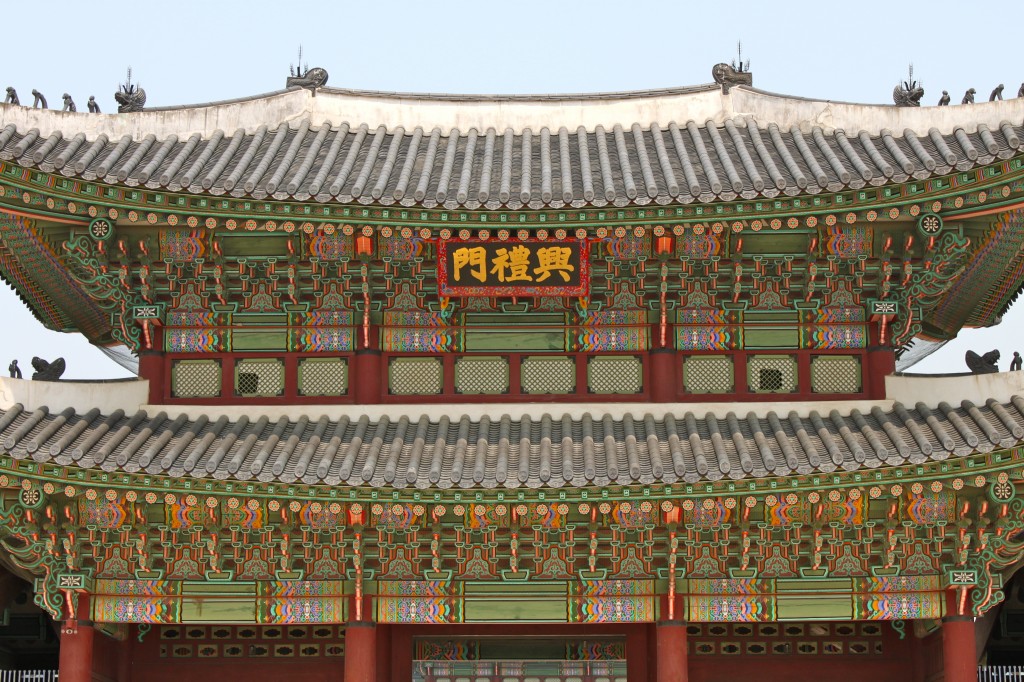
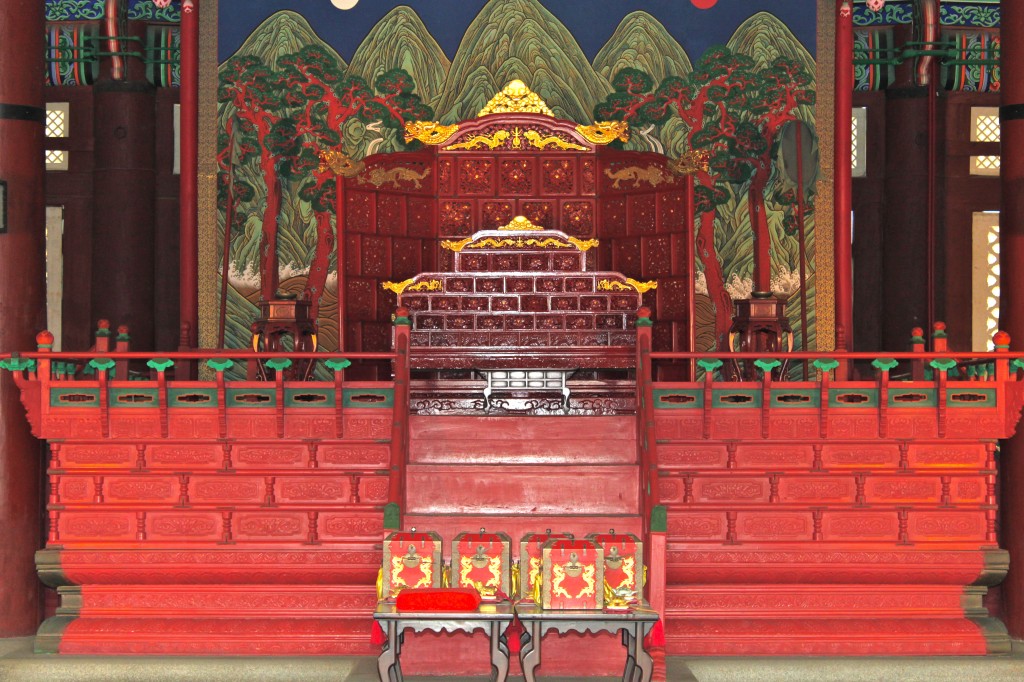

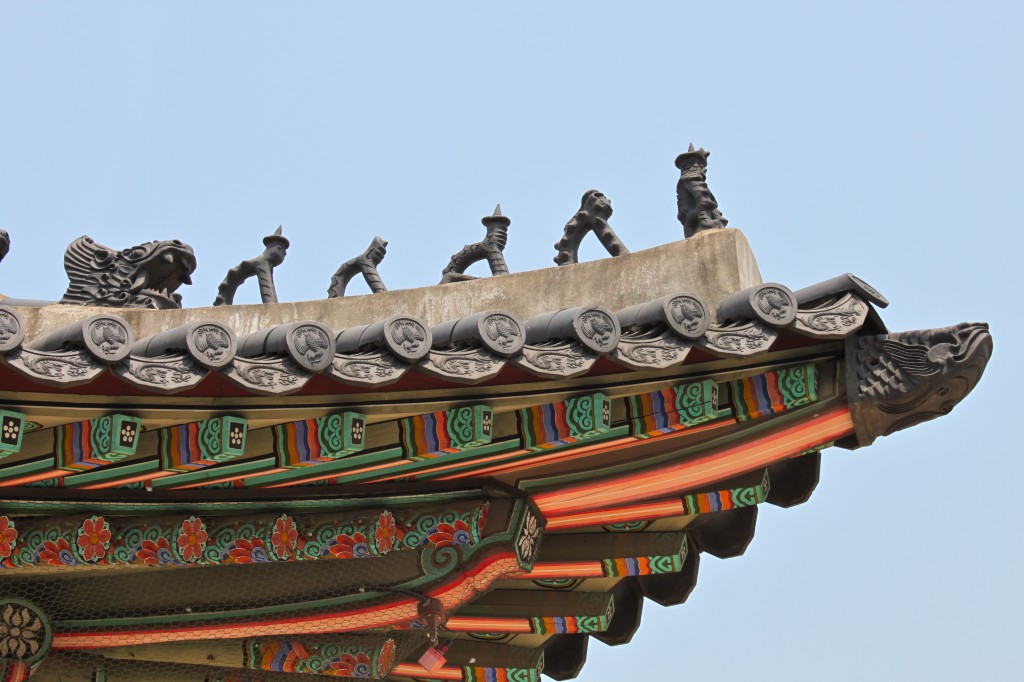
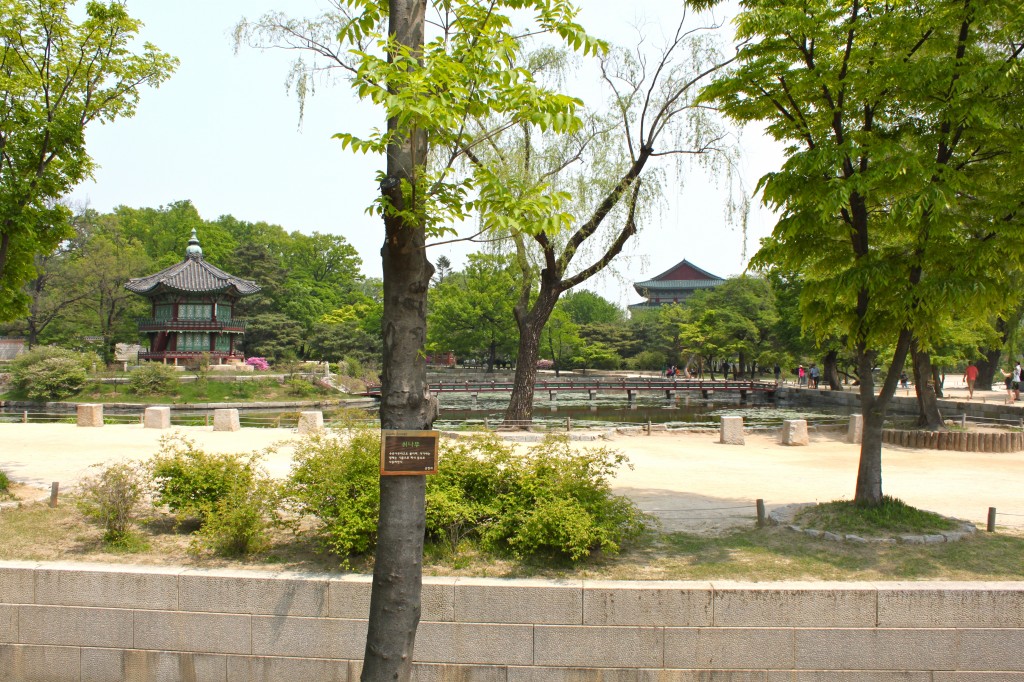
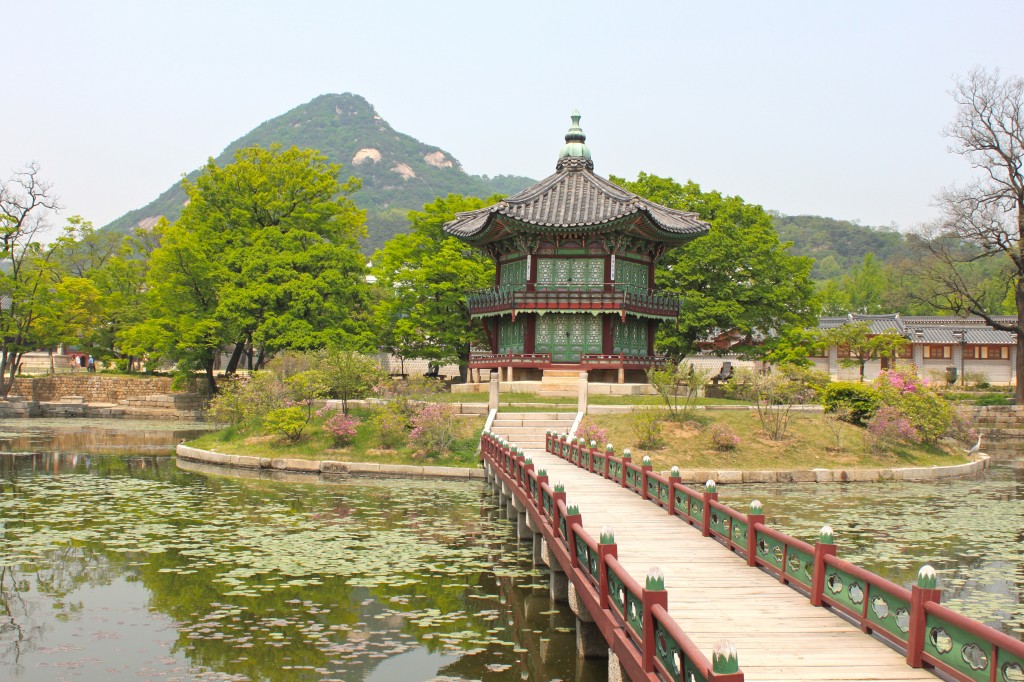
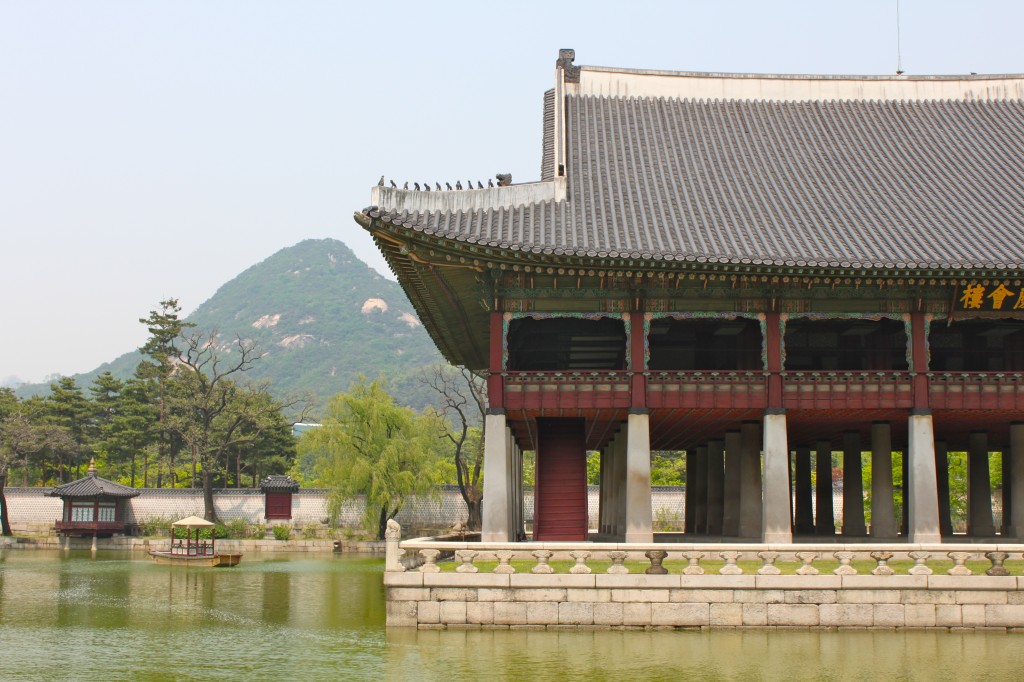

I know what you mean about the ‘foreigner’ comments. Living in a new city and country is strange because you’re straddling the line between being someone who lives and works there and being a foreigner. I hate hearing the word ‘gringa’ – possibly because as a Brit I’m NOT a gringa in the first place – but, at the same time, backpackers and tourists who crowd into places I want to visit too do kind of annoy me so I start to see people’s points. Haha.
Ceri recently posted..Scenes from the Museo de Arte Moderno
I agree about the crowds, I just can’t imagine being at a tourist attraction in my home country and saying something about all the foreigners there…it is what is, though, I guess!